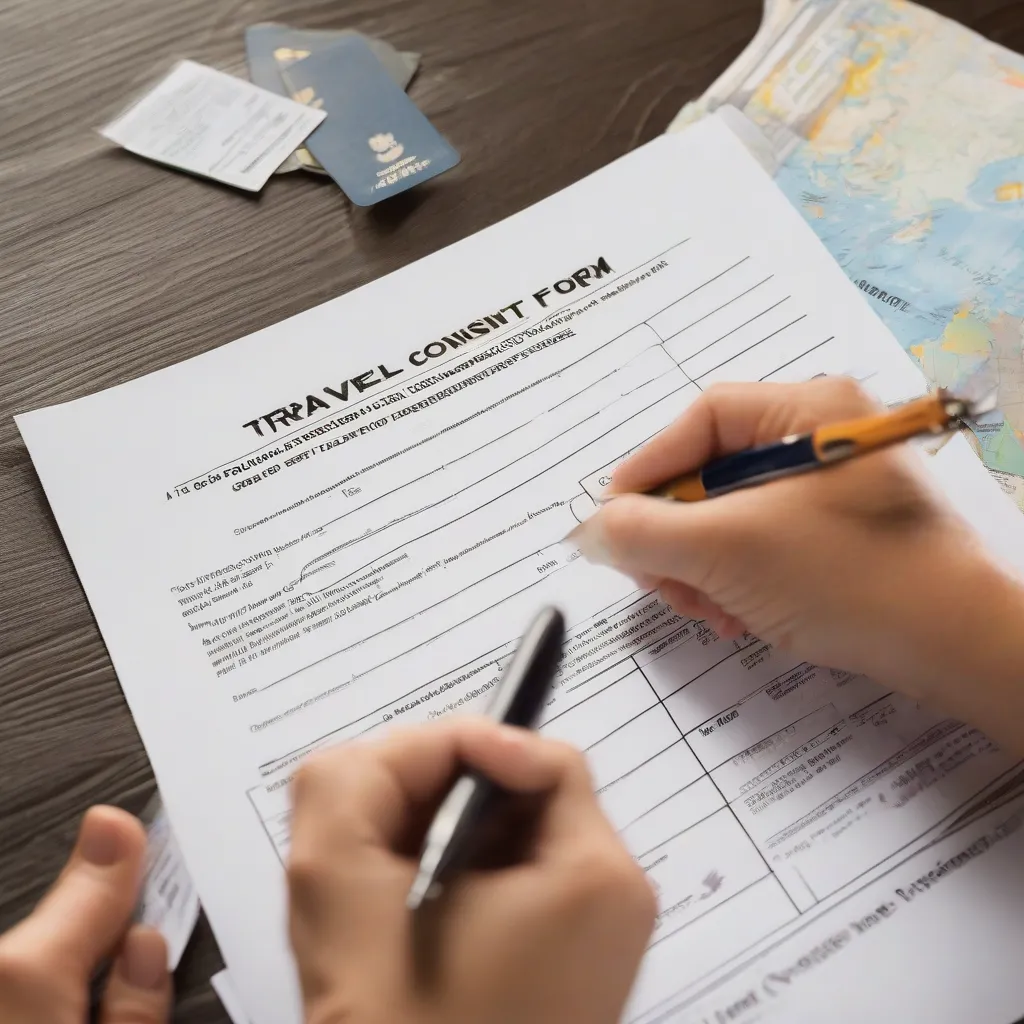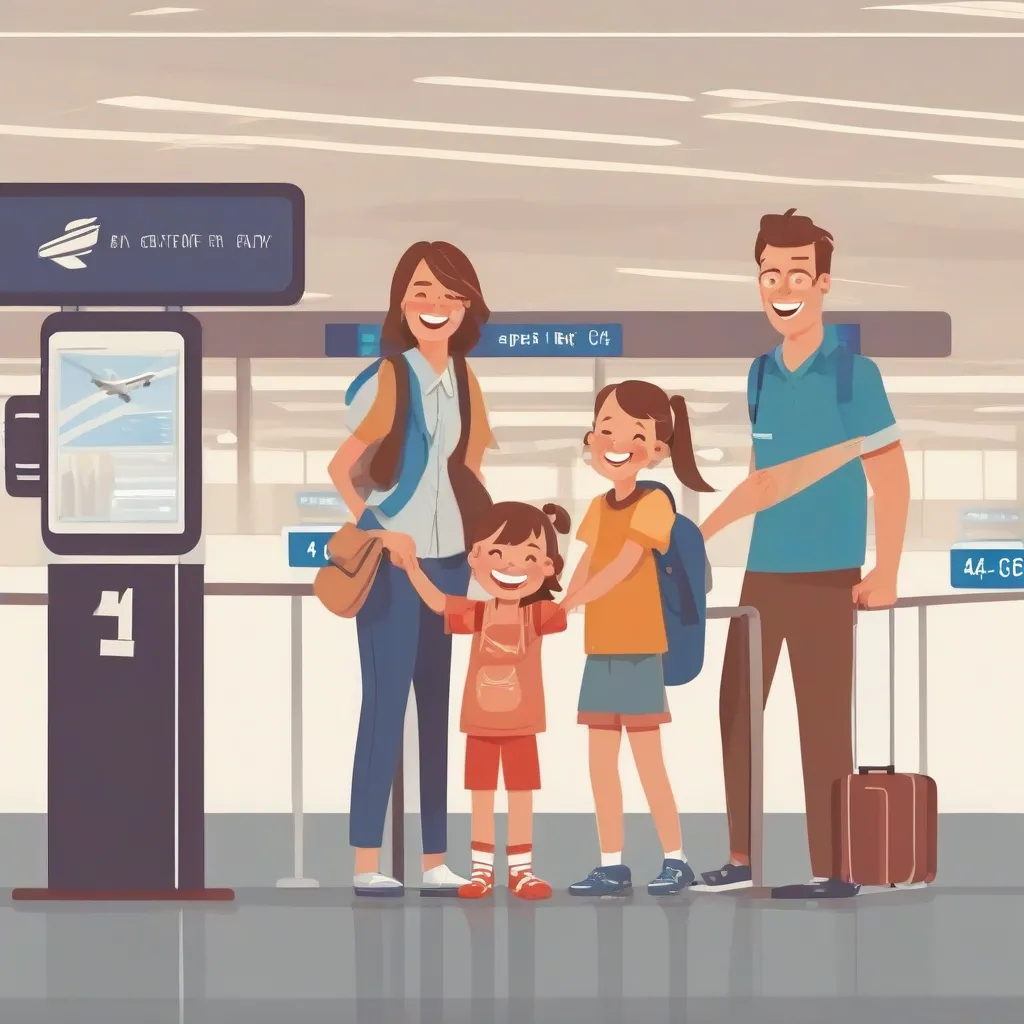Planning a trip for your child, whether it’s a school excursion to the bustling streets of New York City or a summer adventure exploring the ancient ruins of Rome? While the thought of their journey is exciting, ensuring their safe and legal passage is paramount. This is where a well-drafted parental consent form for travel comes in.
Many countries and organizations require minors traveling without both parents to carry a notarized letter of consent. This document acts as legal proof of permission from the absent parent(s), preventing any hiccups during their travels.
Understanding the Importance of a Parental Consent Form for Travel
Imagine this: your child is at the airport, ready to embark on a life-changing trip to the Great Wall of China, a journey they’ve dreamt of for years. Suddenly, they’re stopped at check-in, questioned about their solo travel. The stress and potential disappointment are palpable.
This scenario highlights the crucial role of a parental consent form for travel. It’s not just a piece of paper; it’s peace of mind for you and a safeguard for your child.
Crafting the Perfect Parental Consent Form: A Step-by-Step Guide
Writing a parental consent form for travel doesn’t have to be a daunting task. Follow these simple steps to create a comprehensive document:
1. Start with the Basics:
- Child’s Full Legal Name: Include any middle names as they appear on their passport.
- Date of Birth: This helps verify their age and identity.
- Passport Information: Note the passport number, issue date, and expiry date.
- Travel Dates: Specify the start and end dates of their trip.
- Destination(s): List all the countries and cities your child will be visiting.
2. Provide Parental Information:
- Full Legal Names of Both Parents: Even if only one parent is traveling with the child, include the names of both legal guardians.
- Contact Information: Include phone numbers and email addresses where parents can be reached.
- Addresses: Provide both residential and mailing addresses.
3. Specify Travel Companion(s):
- Full Legal Name(s): Clearly state the name(s) of the adult(s) accompanying your child if they are not traveling alone.
- Relationship to Child: Indicate how the accompanying adult(s) are related to the child (e.g., grandparent, aunt, teacher).
- Contact Information: Include phone numbers and email addresses for the accompanying adult(s).
4. Include Consent Statement:
- Clear and Unambiguous Language: State that you are granting permission for your child to travel.
- Specific Permissions: Specify any permissions granted, such as seeking medical treatment if needed.
5. Notarization:
- Notary Public: Ensure the form is signed in the presence of a notary public.
- Seal and Signature: The notary will affix their official seal and signature to the document.
Tips for a Smooth Journey:
- Carry Multiple Copies: Make several copies of the notarized form for your child, accompanying adults, and yourself. Keep them in separate, easily accessible locations.
- Check Specific Requirements: Some countries or organizations may have additional requirements, such as translations of the consent form.
- Consult Travel Professionals: Travel agents or embassy websites can provide valuable information and country-specific guidelines.
Frequently Asked Questions about Parental Consent Forms for Travel:
1. Is a parental consent form necessary if my child is traveling with only one parent?
While not always mandatory, carrying a consent form is highly recommended, especially for international travel. It can prevent delays and misunderstandings, particularly in situations where custody arrangements might be questioned.
2. Can a grandparent or other relative use a parental consent form to travel with my child?
Yes, as long as the consent form clearly states the relationship between the accompanying adult and the child, and both parents have signed and notarized the document.
3. What happens if my child is traveling with a school group?
Schools often have their own consent forms for group trips. It’s essential to review and complete these forms thoroughly, ensuring they align with your wishes and include all necessary permissions.
 Parental Consent Form for Travel
Parental Consent Form for Travel
Navigating the World with Confidence
Traveling as a minor comes with its own set of rules and regulations. A well-prepared parental consent form for travel acts as a passport to peace of mind, allowing your child to embark on their adventures safely and securely. Remember, preparation is key to unlocking a world of enriching experiences for young explorers!
 Family Travel at the Airport
Family Travel at the Airport
For more travel tips and resources, visit travelcar.edu.vn. Safe travels!